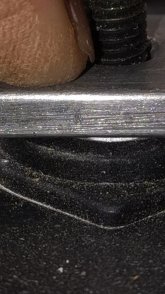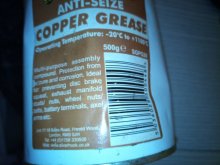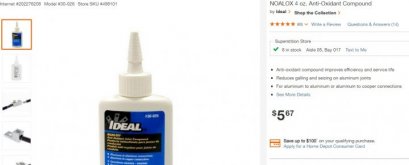I agree with
@Haugen , not for just those reasons.
We have bus-bar, they might get warm, but copper being excellent heat transporter, the not covered base of the bus-bar will cool the increased temperature.
High quality kit can make quite a good seal over the whole thing..
And that's a problem!
Unless you are able to mount in vacuum, you will trap air inside the seal.
Air with moisture and oxigen.
There will be galvanic corrosion, and no place to go.
By the time your connection give problems... You can probably buy new cells. It will be too late to fix anything.
Inside the seal there is higher heat, more extension and shrinking, more stress on the metals.
It will take 4 years or longer before you get any issues, but you won't make the +15 years many of us hope for.
If you don't seal, yes, there are external influences.
But are they bad?
I don't think so.
If it was bad the design would be totally different.
Tinned or zinc coated copper bus-bar should reduce the galvanic corrosion to minimal and still give optimal contact.
Slightly less optimal is corosion prevention by oxi-guard or vaseline, where both are non conductive di-electric grease.
With contact you squeeze the non conductive layer so thin that it's restriction is minimal.
Where there is full contact, there is "no oxygen", no oxidation.
"No oxigen" between quotes..
Yes.. with heat up and cooling some friction might take place.
Also high and low air pressure might expand airpocket..
Might.
Probably not, or so little that your flat metal to metal with filler (conductive or non conductive) will not oxidate enough to provide connection issues with your terminal for the next + 15 years.
It won't last 300 years.
Flat metal to metal is like 2 sheets of flat glass placed together with a drop of water...
Put some ink in the water to see how much air is still present if the glass is properly prepared (fat free)
Your metal to metal will look like this.
And just like this 2 sheets of glass, the layer between the sheets have almost 0 problems from the environment outside.
Even with a small airpocket you see it expands and contracts, but won't be a problem.
10 years.. water vaporise, even at 20 degree Celcius.
Your di-electric grease will dry out a little on the edges.
Electric conductive paste doesn't.
For safety reasons, animals and children I can suggest sealing to prevent accidental contacts
There are other solutions that are more flexible that give the same/better results like a locked space.
It's good to see what is happening!
And just being exposed to air isn't a bad thing.
The cells are intended for home use in home environment.
Not outside, not marine.
(Read the specifications sheets aka white paper)
Using outside those specifications like an airplane with huge difference in pressure, moisture and temperature..
You need special precautions.
Inside your home?
Cleaning the terminals (= remove oxidation) and protect with di-electric grease is for 90% of the installation all that is needed
Those who want little better use electric conductive paste, the special silver paste you can buy for this have other chemical components that will reduce galvanic corrosion to minimal.
It's not just silver powder in grease.
For the people who just place the bars on the cells..
They will get problems like uneven voltage readings.
If you have new cells and after installation your voltage goes all the way except being balanced...
Disconnect the battery, remove your Bus-bars and start cleaning!!
Oxidation is easy removed with natural household tools like lemon juice, vinagre or cream of tartar
This works also for copper and tinned/zinc plated Bus-bars
Sandpaper or rough sponge is seldom needed










